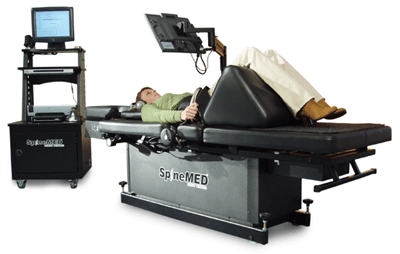
|
Your
spine must be stable to support upright posture, and also flexible,
allowing you to bend and twist. This is mechanically very challenging
and makes your spine vulnerable to injury.
|
A disc separates each vertebrae and acts like a cushion, absorbing shock along the spine. The disc is made up of jelly like substance known as the nucleus, covered with many strong outer layers called the annulus. The discs do not have a supply of blood vessels to nourish and replenish them, rather, they depend on a transfer of fluids, nutrients and oxygen from the bones (vertebrae) above and below them. This transfer of fluid depends on the difference in pressure between the inside of the discs and the surrounding vertebrae and blood vessels. This is why most disc nutrition and regeneration takes place when we lie down and the pressure inside the discs is reduced. This process is not very efficient, and as we age, the disc is exposed to wear and tear greater than its ability to heal and regenerate. The discs are prone to injury and degeneration as we use our backs each day, as they are compressed and torqued through sitting, bending and lifting. In the two lower levels of the lumbar spine, stress forces can equal 2,000 to 3,000 pounds of pressure per square inch. Repeated injury weakens the annulus, while the earliest changes that occur in the discs are tears in the annulus. |
With increased pressure inside the disc, the tears in the annulus may allow the disc to bulge like an old tire with a broken casing. Any internal damage to the disc may cause severe pain in the back. If all of the layers of the annulus break, the jelly-like nucleus will ooze out of the disc, causing a disc herniation. A bulging or herniated disc may press on spinal nerves, causing sciatica, which can be felt as weakness in your muscles, loss of sensation in the skin or a tingling or burning sensation along the nerves in your buttock and legs.
|

